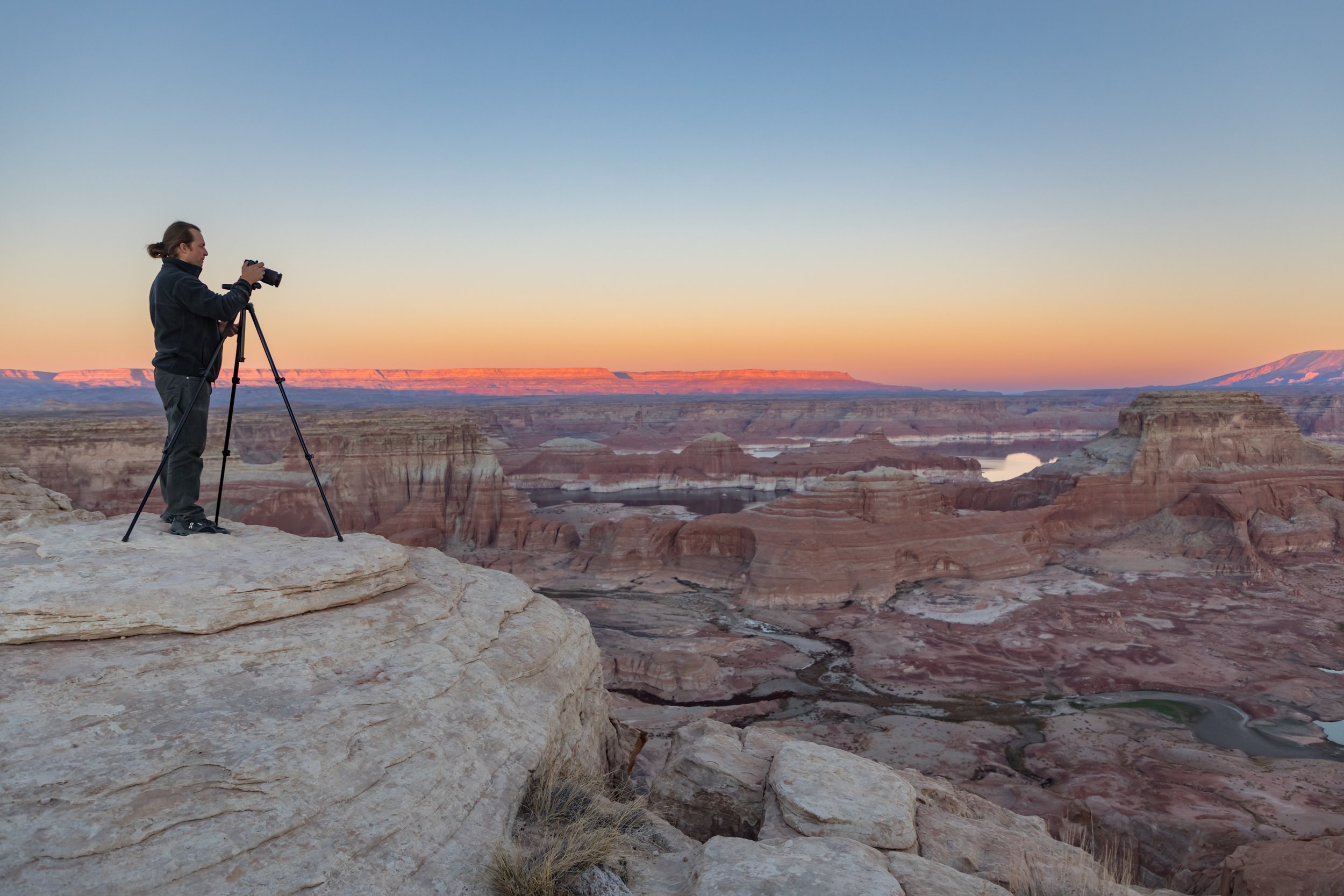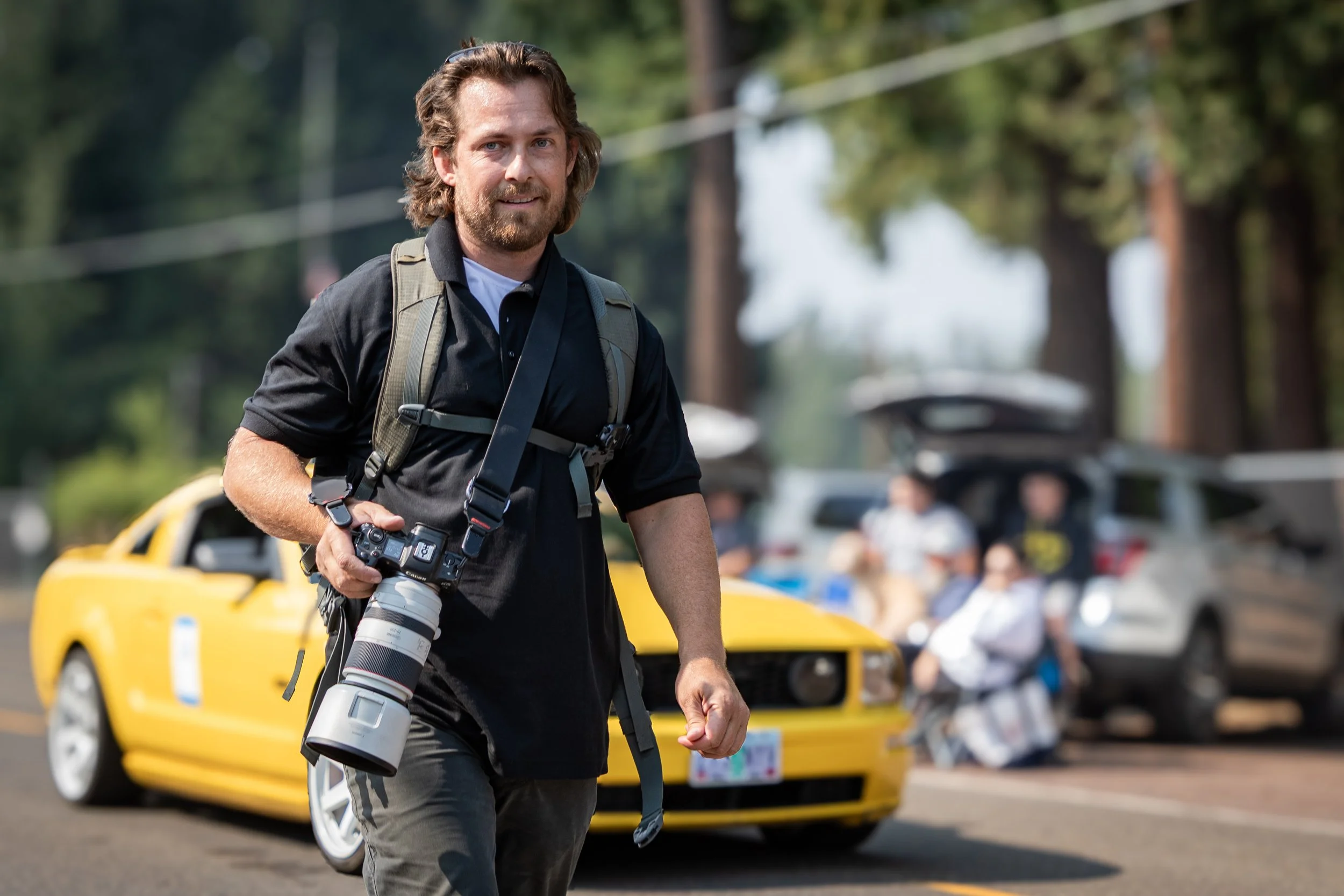
The Ultimate Wollertz Photography Digital Photography Guide
Photography Mastery in 3 Parts: Your Complete Guide to Elevating Your Craft
Master the art of photography with over 50+ essential lessons, expertly distilled into a 3-part series that’s both easy to follow and packed with pro-level insights. Whether you're just starting out or refining your skills, this course is designed to take your photography to the next level.
📸 Part 1: The Basics
Lay the foundation with core concepts like the exposure triangle, shutter speed, and aperture—then learn how to bend the rules for creative effects. You’ll gain practical skills, pro tips, and even advice on traveling with your gear, so you're always ready for the perfect shot.
🌎 Part 2: The Field Guide
Take your camera into the real world with over 20 hands-on lessons, covering everything from shooting in rain and fog to mastering macro, street photography, and more. Each scenario is broken down into a simple “recipe” format, so you can adapt quickly and nail the shot every time.
💰 Part 3: The Commercial Side of Things
Turn your passion into profit with 10 proven strategies to make money from your photography. Learn how to market your work, attract clients, and recover your investment fast—so you can keep doing what you love while building a sustainable business.
-
Part 1 - The Basics
-
Lesson 1: The Exposure Triangle
Introduce your lesson with an optional, short summary. You can edit this excerpt in lesson settings.
-
Lesson 2: Shutter Speed
Different uses for shutter speeds and how to maximize your creativity
-
Lesson 3: Aperture
Controlling the aperture for more than just depth of field (DOF).
-
Lesson 4: ISO
Understanding ISO and how it affects your photography.
-
Lesson 5: Metering Modes
Different options your camera offers to find a balanced exposure in a variety of situations.
-
Lesson 6: Dynamic Range
The ability of your camera to capture the bright and dark areas of a scene.
-
Lesson 7: White Balance
Every light has a temperature.
Tungsten lightbulbs tend to have a warm yellow or orange tone. Moon light has a cool bluish tone.
Your camera has presets you can select to neutralize the colors casted by the light source so that the whites look white.
You can also use these temperatures to get creative and make unique photos by exaggerating certain colors or reducing others.
-
Lesson 8: Focus
Knowing which focus option to use for each situation will help you obtain sharp images in any situation.
-
Lesson 9: Picture Styles
These refer to a set of presets or settings that adjust the parameters on how an image is captured and processed by the camera’s sensor.
-
Lesson 10: Exposure Compensation
Sometimes proper exposure is not what we want. in some situations we might want to brighten the scene or darken the landscape creating silhouettes. Exposure compensation will help us achieve these results using the semi-automatic camera modes.
-
Lesson 11: Image Stabilization.
Some cameras and lenses have stabilization options. These will help us capture shots in low light or capture sharp images with controlled movement.
-
Lesson 12: Memory Cards
Just like film in the old days, memory cards can be expensive. Understanding read and write speeds can help us get more out of our cameras.
-
Lesson 13: Drive Modes
You may want to delay the timer 10 seconds or 2 seconds to avoid movement. You may want to shoot back to back to capture the perfect moment in a basketball game.
Whatever your situation understanding the different options available to you will help you capture the perfect shot.
-
Lesson 14: Composition
Capturing a great shot is a lot more than knowing how to use your camera. Arranging the elements in a photograph to balance the image and the colors is the magic is!
-
Lesson 15: Sensor Sizes
Knowing what your camera sensor can capture and how it captures it will help you understand your camera’s limits and how to overcome them.
-
Lesson 16: Lenses
Different tools for different situations. Get the most out of your gear!
-
Lesson 17: Filters
Tools to help you get creative.
-
Lesson 18: Studio Lighting
We have a ton of options available to us when it comes to lighting. These are my favorites and why.
-
Lesson 19: Cleaning and Handling
Cleaning and protecting your equipment is protecting your investment.
-
Lesson 20: Photo Storage Tips
Back-up drives, cloud storage. How to preserve your memories.
-
-
Part 2 - The Field Guide
-
Lesson 1: Landscapes
What you will need and camera setting suggestions to capture the perfect landscape photo.
-
Lesson 2: Moving Water
Wether you want to freeze or blur water, one camera setting will help you simplify the process.
-
Lesson 3: Photography in the Rain.
Rain offers great photographic opportunities. Here’s is how to make the best from the situation.
-
Lesson 4: Mist and Fog.
Using the conditions to make great photos.
-
Lesson 5: Snow
Snow brings fantastic lighting conditions. And also a few challenges.
-
Lesson 6: Sunrise and Sunset.
The best light doesn’t last long. Be prepared!
-
Lesson 7: Action or Sports.
Be ready to capture the moment!
-
Lesson 8: Wildlife Photography.
Thrilling opportunities!
-
Lesson 9: Vehicle Photography.
Capture great photos with these tips!
-
Lesson 10: Moon Photography.
Capture close ups or landscapes including the moon with these settings.
-
Lesson 11: Fireworks.
Seasonal unique opportunities.
-
Lesson 12: Stars and the Milky Way
Different ideas for capturing the stars.
-
Lesson 13: City Lights.
Evening in a city can be a magical time for photography.
-
Lesson 14: Street Photography.
A unique challenge for sure.
-
Lesson 15: Travel Photography.
Make the most from your vacations.
-
Lesson 16: Macro Photography.
A world within a world.
-
Lesson 17: Panoramas.
For when your wide angle lens isn’t wide enough.
-
Lesson 18: Focus Stacking.
Apertures and Depth of field don’t always match the lighting conditions.
-
Lesson 19: HDR.
This sis a technique used for when your cameras dynamic range just isn’t enough.
-
Lesson 20: Photography in low light.
Low light situations can be challenging.
-
Lesson 21: Light Painting.
A fun creative style of photography.
-
-
Part 3 - The Commercial Side of Things
-
Lesson 1: Product Photography.
Time to showcase products in their best light.
-
Lesson 2: Real Estate Photography.
Sales or rentals here is how to capture beautiful homes.
-
Lesson 3: Cocktails.
For bars and Restaurants. One of my favorite things to photograph.
-
Lesson 4: Food.
Food can be a delicious thing to shoot.
-
Lesson 5: Pets.
Members of the family that often don’t make it to the photo albums.
-
Lesson 6: Portraits.
Portraits are great way to stay busy as a photographer.
-
Lesson 7: Children
Not as difficult as one might think.
-
Lesson 8: Families and Groups.
A different challenge.
-
Lesson 9: Head Shots.
Professional head shots.
-
Lesson 10: Weddings.
This can be stressful. Try this first.
-
Meet your instructor
✳
Meet your instructor ✳
Charles Wollertz
Fifteen years ago, I bought my first real camera, and I rarely leave home without it. I began with stock photography and still use it to learn and practice. I have clients that keep me busy part of the year, and I now run a YouTube channel where I share fun content every week.
What you’ll learn
-
In part one, we cover the basics of photography: shutter speed, aperture, ISO, and how to manage exposure. We explore composition, creative camera techniques, white balance, exposure compensation, and more.
-
This is a guide for everyday photography situations. I'll share my recommended gear, camera settings, and composition ideas for your photo shoots.
-
Here, you'll find ways I've earned money as a photographer. Each lesson written in the same easy to follow format as part Two.
Course FAQ
-
-
It all begins with an idea. Maybe you want to launch a business. Maybe you want to turn a hobby into something more. Or maybe you have a creative project to share with the world. Whatever it is, the way you tell your story online can make all the difference.
-
It all begins with an idea. Maybe you want to launch a business. Maybe you want to turn a hobby into something more. Or maybe you have a creative project to share with the world. Whatever it is, the way you tell your story online can make all the difference.




